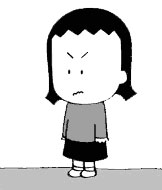
Ven Jian Dan giving a lecture (from Awakening Mind Zen blog)
The Pew Forum recently published a survey of American religion, and this sparked an interesting discussion in the Buddhist community. If you want to see PhDs analyze it to death and tear it apart, go visit H-Buddhism. I’m going to refrain from tossing in my opinion on the survey. I’m primarily interested in the Buddhist (blogging) community’s reaction on two points, and what this says about the community.
Many people took the survey at face value. Charles Prebish seemed keen to note some surprises. For some, this survey was proof that American Buddhism is in decline, even dying out, especially due to a lack of children. Some found particular interest in the fact that the Pew survey reported more non-Asian Buddhists than Asian Buddhists in America, and vastly more converts than heritage Buddhists.
The first reaction is one that I’ve heard a lot over the past eight years: American Buddhism is getting old. In fact, Sumi Loundon found her inspiration to compile Blue Jean Buddha based on her experience in a retreat kitchen as the lone twentysomething among a crowd of Baby Boomers. Of course, she eventually found young Buddhist voices. But the reaction on these blogs suggests that Boomer Buddhists still get together in groups where active young Buddhists are a tiny minority, if they’re even there at all.
The second reaction — more of a surprise — is nested in the notion that American Buddhism is predominantly Asian American. According to the Pew survey, it’s not. Some bloggers expressed a bit of satisfaction in this result (see here and here, but also note there is some methodological controversy.) The bloggers’ emphasis on this particular result suggests that the division between Asian and non-Asian Buddhist America is just as real as ever. For me, the force of this reaction means that many Buddhists out there still have a strong insecurity with regards to their American Buddhist identity.
These two reactions are often framed as American Buddhism’s two great challenges. How do we perpetuate our community? How do we cross the cultural divide?
I’d like to think that these questions don’t need answering. Maybe I’m overly optimistic. If John and I (your humble “dharma bloggers”) are a representative slice of Buddhist America, then we have already solved both the issues. We are active young Buddhists, of Asian and non-Asian heritage, who work together in the Buddhist community.
There are many more out there like us. But for some reason, we aren’t noticed.
Read Full Post »
 Buddhism in America is headed for exciting times, agreed the four esteemed participants — Sumi Loundon Kim, Rod Meade Sperry, Iris Brilliant and Norman Fischer. They discussed the separate communities of formal convert Buddhists and casual Buddhists-by-affiliation. Also mentioned were emerging trends, such as a need for innovation, the hunger for engaged Buddhism and the mixture of Buddhism and modern technology. But what did they not mention?
Buddhism in America is headed for exciting times, agreed the four esteemed participants — Sumi Loundon Kim, Rod Meade Sperry, Iris Brilliant and Norman Fischer. They discussed the separate communities of formal convert Buddhists and casual Buddhists-by-affiliation. Also mentioned were emerging trends, such as a need for innovation, the hunger for engaged Buddhism and the mixture of Buddhism and modern technology. But what did they not mention?